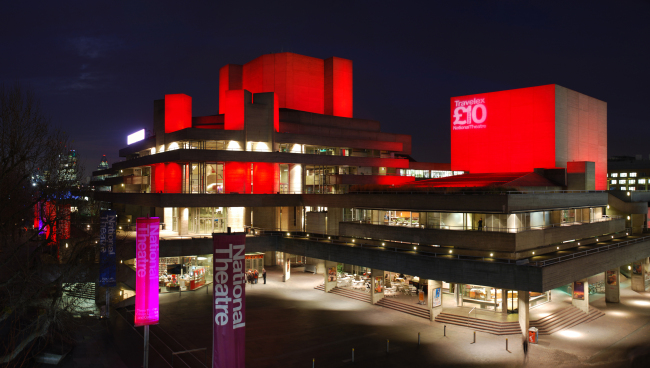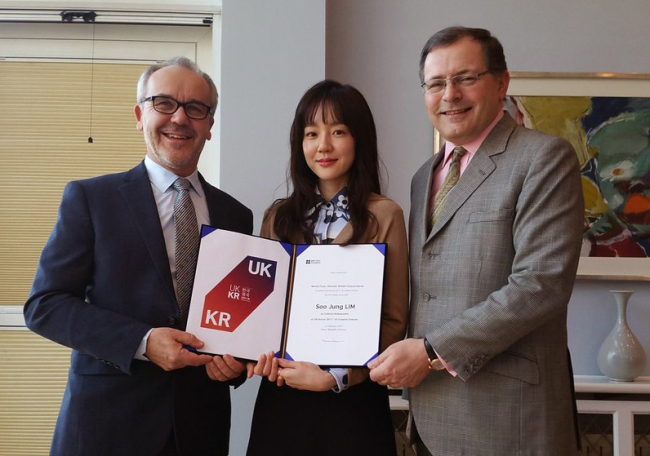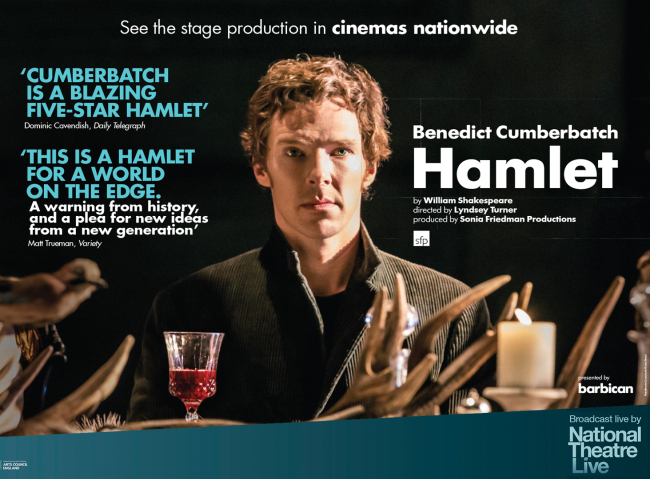[Herald Interview] 'Creative industries spur cycle of innovation'
전체 맥락을 이해하기 위해서는 본문 보기를 권장합니다.
"Running a successful cultural industries sector requires a combination of passion and love for the arts as well as the practical tools of managing finances," Fryer said in an interview. "As the sector grows, the appetite for cultural activities from communities grows. To cover insufficient money coming from the public purse, entrepreneurialism is encouraged. That brings in more professionals who do the training and develop business strategies."
Moreover, institutions adapt to increase fundraising from companies and foundations, which "want to be part of this activity," the director explicated. "You need the skills to attract these agencies."
이 글자크기로 변경됩니다.
(예시) 가장 빠른 뉴스가 있고 다양한 정보, 쌍방향 소통이 숨쉬는 다음뉴스를 만나보세요. 다음뉴스는 국내외 주요이슈와 실시간 속보, 문화생활 및 다양한 분야의 뉴스를 입체적으로 전달하고 있습니다.
The National Theatre of Great Britain in London -- one of the United Kingdom’s most prominent, publicly funded performing arts venues -- is a seedbed of artistic expression and commercial innovation producing world-class plays.
Established in 1963 as the National Theatre Company, the organization has thrust Britain’s cultural prowess onto the world stage with imaginative interpretation of classical and contemporary performances. Some of its finest productions have been played in London’s West End theaters as well as New York’s Broadway theaters.
Since 2010, its revenue from fundraising has increased 17 percent, while reliance on public funding has decreased by 25 percent.
According to Martin Fryer, director of the British Council Korea, the creative industries -- encompassing cinema, performing arts, film, television, advertising, publishing, architecture, art, animation, gaming, crafts, design, fashion and music, among others -- not only give a lift to a country’s cultural riches, they also spur new formulas for the creative economy. The council is the UK’s international organization committed to strengthening cultural relations and providing educational opportunities, with branches in over 100 countries around the world and six continents.

The UK’s creative industries have been one of the fastest growing sectors on the back of strong public support, government funding and entrepreneurial know-how.
“Running a successful cultural industries sector requires a combination of passion and love for the arts as well as the practical tools of managing finances,” Fryer said in an interview. “As the sector grows, the appetite for cultural activities from communities grows. To cover insufficient money coming from the public purse, entrepreneurialism is encouraged. That brings in more professionals who do the training and develop business strategies.”
Moreover, institutions adapt to increase fundraising from companies and foundations, which “want to be part of this activity,” the director explicated. “You need the skills to attract these agencies.”
The new administration of President Moon Jae-in has vowed to upend corrupt practices that pervaded Korea’s art and cultural realm, as the previous government was found and condemned for creating a “blacklist” of anti-government artists, scholars and figures.
With the appointment of the new Minister of Culture, Sports and Tourism Do Jong-hwan, the government is expected to put balm on the wounds and usher in fairness and rectitude into its cultural administration through diverse policy, financial and spatial support.

This year has been designated the year for UK-Korea Creative Futures, with celebrations of various cultural and artistic activities in both countries. The events center on the five themes of intercity cooperation, innovation through digital technologies, diversity and inclusion, creative entrepreneurship and creative learning.
The UK and Korea should build on the work by the previous government in the creative industries, Fryer said, pointing to the annual UK-ROK Creative Industries Forum between Britain’s Department for Culture, Media and Sport and Korea’s Ministry of Culture, Sports and Tourism.
“We hope that the new administration will review this bilateral cooperation forum to examine how both countries can use the creative industries to drive innovation in cinema, television, pop music, animation, gaming, visual effects and others,” Fryer said.
Fryer made a distinction between the profit-generating creative industries and grants-based arts and culture, noting the two realms overlap. Although universities, theaters, concert halls and multidisciplinary cultural centers receive small-scale grants from the British government, the financial support still helps their activities significantly by giving them room to experiment and take risks, he expounded.
“In the arts, experimentation and risk-taking are essential to create something new and exciting. Sometimes it works, sometimes it doesn’t,” he said. “The industry also needs well-designed regulations on tax breaks for sponsors and intellectual properties.”

Through wide-ranging schemes and fellowships, the UK government helps nurture next generations of museum and theatre directors and administrators, he said. By joining apprenticeship programs for six months or more, where they interact with mentors and gain hands-on experience, up-and-coming artists and administrators acquire the necessary skills on the field.
Regarding the “Hallyu Korean Wave boom,” Fryer said its next challenge is to break down barriers and categories to spur creative convergence and coalescence of the crowds.
“You need to break down the categories and boundaries, such as pop, jazz and classical. They have different audiences and it’s almost tribal, but the truth is you can like both pop and classical at the same time,” according to Fryer. “For example, the classical music industry can attract young audiences by inviting pop artists as part of its program. But it has to be a genuine crossover and fusion, blurring the boundaries between entertainment and art.”
Fryer pointed to newly adapted Shakespearean plays as a successful example. People might find Shakespearean plays “serious, dull and boring,” but they can be highly entertaining and popular if done with good production, design and other technological innovations, he said.
Highlighting Britain’s complex history of colonization -- the nation being both colonized by Celts, Germans, Anglo-Saxons, Vikings and Normans, as well as a colonizer the world over through the British Empire -- Fryer said its global vestiges have enriched the nation’s culture and the arts.

“The modern Britain is benefitting from voices that have joined our world from our former colonies,” he noted, pointing to artists and writers who trace their roots to the old empire, including South Asia, the Caribbean and Africa.
“They grew up with the voices of their parents from these countries, and now they are speaking out with their own voices as second, third and fourth generations. They now have their own perspectives on our postcolonial cultural mix. And people are learning from each other.”
However, in Korea the main thread of art and culture remains nationalistic and homogenous, Fryer said.
“There aren’t yet strong expressions of diverse, pluralistic identities representing different communities,” according to the director. “But as people from around the world make Korea their home and integrate into the society, more voices will come through. It’s almost inevitable.”
The newcomers will likely draw their inspirations from being an outsider, with many narrating their coming-of-age in multiethnic communities in Ansan and other outskirts of cities, Fryer forecast. “The stories of their difficult journey to Korea and struggle to fit into the society will be very interesting.”
By Joel Lee (joel@heraldcorp.com)
<ⓒKoreaHerald(www.koreaherald.com)무단전재 및 재배포 금지>
Copyright © 코리아헤럴드. 무단전재 및 재배포 금지.